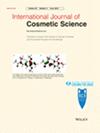Today, there is only limited knowledge of the spatial organization of hair chemistry. Infrared microspectroscopy is a well-established tool to provide such information and has significantly contributed to this field. In this study, we present new results combining multiple infrared microspectroscopy methods at different length scales to create a better chemical histology of human hair, including the hair follicle, hair shaft, hair medulla and hair cuticle.
We used hyperspectral IR imaging & spectroscopy (HIRIS) and synchrotron-radiation FTIR microspectroscopy (SR-μFTIR) to measure transversal hair sections and SR-μFTIR to obtain high-resolution maps of longitudinal sections from the hair shaft and from the hair follicle. We used optical photothermal IR microspectroscopy (OPTIR) to analyse the cuticle surface of intact hairs.
By mapping longitudinal sections of the human hair follicle with confocal SR-μFTIR, we report the first demonstration of glycogen presence in the outer root sheath of the hair follicle by spectroscopy, and its quantification at the micron scale. Spectral maps, combined with machine learning-based analysis, enabled us to differentiate the various layers of the hair follicle and provided insights into the chemical changes that occur during hair formation in the follicle.
Using HIRIS and SR-μFTIR to analyse the hair medulla in transversal sections of human hairs, we report here, for the first time by vibrational spectroscopy methods, the detection of unsaturated lipids at very low concentrations in the medulla.
By analysing longitudinal sections of the hair shaft with SR-μFTIR, we found that calcium carboxylates are present in large regions of the hair cuticle, and not just in small focal areas as previously thought. We then use OPTIR to analyse the hair cuticle of intact hairs at submicron resolution without sectioning and report the distribution of calcium carboxylates at the surface of intact hair for the first time.
These new findings illustrate the potential of infrared microspectroscopy for imaging the chemical composition of human hair and may have implications for biomedical research or cosmetology.


